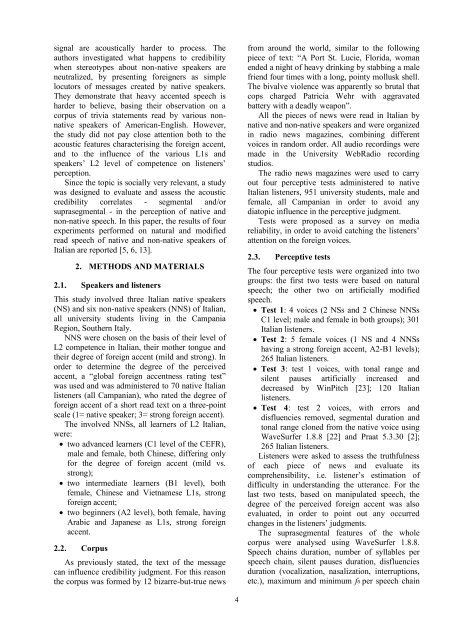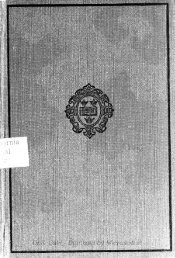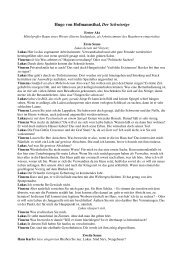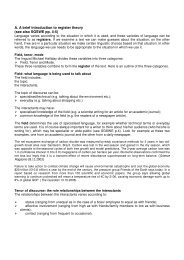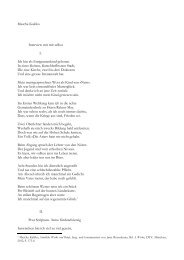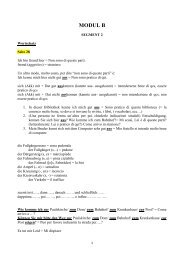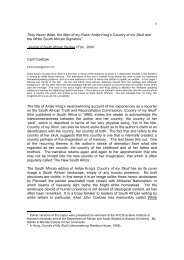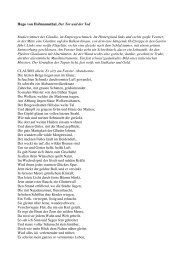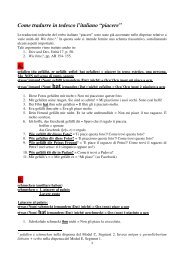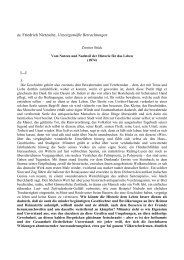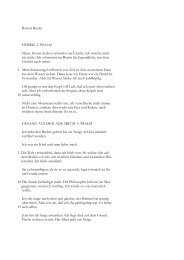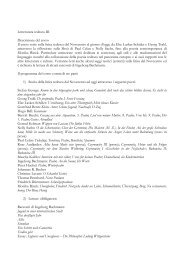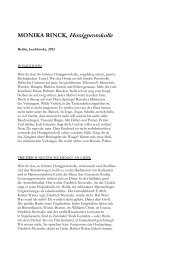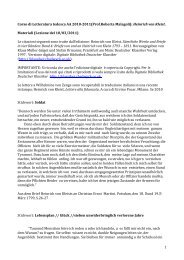Methodological Perspectives on Second Language Prosody
Methodological Perspectives on Second Language Prosody
Methodological Perspectives on Second Language Prosody
Create successful ePaper yourself
Turn your PDF publications into a flip-book with our unique Google optimized e-Paper software.
signal are acoustically harder to process. The<br />
authors investigated what happens to credibility<br />
when stereotypes about n<strong>on</strong>-native speakers are<br />
neutralized, by presenting foreigners as simple<br />
locutors of messages created by native speakers.<br />
They dem<strong>on</strong>strate that heavy accented speech is<br />
harder to believe, basing their observati<strong>on</strong> <strong>on</strong> a<br />
corpus of trivia statements read by various n<strong>on</strong>native<br />
speakers of American-English. However,<br />
the study did not pay close attenti<strong>on</strong> both to the<br />
acoustic features characterising the foreign accent,<br />
and to the influence of the various L1s and<br />
speakers’ L2 level of competence <strong>on</strong> listeners’<br />
percepti<strong>on</strong>.<br />
Since the topic is socially very relevant, a study<br />
was designed to evaluate and assess the acoustic<br />
credibility correlates - segmental and/or<br />
suprasegmental - in the percepti<strong>on</strong> of native and<br />
n<strong>on</strong>-native speech. In this paper, the results of four<br />
experiments performed <strong>on</strong> natural and modified<br />
read speech of native and n<strong>on</strong>-native speakers of<br />
Italian are reported [5, 6, 13].<br />
2. METHODS AND MATERIALS<br />
2.1. Speakers and listeners<br />
This study involved three Italian native speakers<br />
(NS) and six n<strong>on</strong>-native speakers (NNS) of Italian,<br />
all university students living in the Campania<br />
Regi<strong>on</strong>, Southern Italy.<br />
NNS were chosen <strong>on</strong> the basis of their level of<br />
L2 competence in Italian, their mother t<strong>on</strong>gue and<br />
their degree of foreign accent (mild and str<strong>on</strong>g). In<br />
order to determine the degree of the perceived<br />
accent, a “global foreign accentness rating test”<br />
was used and was administered to 70 native Italian<br />
listeners (all Campanian), who rated the degree of<br />
foreign accent of a short read text <strong>on</strong> a three-point<br />
scale (1= native speaker; 3= str<strong>on</strong>g foreign accent).<br />
The involved NNSs, all learners of L2 Italian,<br />
were:<br />
two advanced learners (C1 level of the CEFR),<br />
male and female, both Chinese, differing <strong>on</strong>ly<br />
for the degree of foreign accent (mild vs.<br />
str<strong>on</strong>g);<br />
two intermediate learners (B1 level), both<br />
female, Chinese and Vietnamese L1s, str<strong>on</strong>g<br />
foreign accent;<br />
two beginners (A2 level), both female, having<br />
Arabic and Japanese as L1s, str<strong>on</strong>g foreign<br />
accent.<br />
2.2. Corpus<br />
As previously stated, the text of the message<br />
can influence credibility judgment. For this reas<strong>on</strong><br />
the corpus was formed by 12 bizarre-but-true news<br />
from around the world, similar to the following<br />
piece of text: “A Port St. Lucie, Florida, woman<br />
ended a night of heavy drinking by stabbing a male<br />
friend four times with a l<strong>on</strong>g, pointy mollusk shell.<br />
The bivalve violence was apparently so brutal that<br />
cops charged Patricia Wehr with aggravated<br />
battery with a deadly weap<strong>on</strong>”.<br />
All the pieces of news were read in Italian by<br />
native and n<strong>on</strong>-native speakers and were organized<br />
in radio news magazines, combining different<br />
voices in random order. All audio recordings were<br />
made in the University WebRadio recording<br />
studios.<br />
The radio news magazines were used to carry<br />
out four perceptive tests administered to native<br />
Italian listeners, 951 university students, male and<br />
female, all Campanian in order to avoid any<br />
diatopic influence in the perceptive judgment.<br />
Tests were proposed as a survey <strong>on</strong> media<br />
reliability, in order to avoid catching the listeners’<br />
attenti<strong>on</strong> <strong>on</strong> the foreign voices.<br />
2.3. Perceptive tests<br />
The four perceptive tests were organized into two<br />
groups: the first two tests were based <strong>on</strong> natural<br />
speech; the other two <strong>on</strong> artificially modified<br />
speech.<br />
Test 1: 4 voices (2 NSs and 2 Chinese NNSs<br />
C1 level; male and female in both groups); 301<br />
Italian listeners.<br />
Test 2: 5 female voices (1 NS and 4 NNSs<br />
having a str<strong>on</strong>g foreign accent, A2-B1 levels);<br />
265 Italian listeners.<br />
Test 3: test 1 voices, with t<strong>on</strong>al range and<br />
silent pauses artificially increased and<br />
decreased by WinPitch [23]; 120 Italian<br />
listeners.<br />
Test 4: test 2 voices, with errors and<br />
disfluencies removed, segmental durati<strong>on</strong> and<br />
t<strong>on</strong>al range cl<strong>on</strong>ed from the native voice using<br />
WaveSurfer 1.8.8 [22] and Praat 5.3.30 [2];<br />
265 Italian listeners.<br />
Listeners were asked to assess the truthfulness<br />
of each piece of news and evaluate its<br />
comprehensibility, i.e. listener’s estimati<strong>on</strong> of<br />
difficulty in understanding the utterance. For the<br />
last two tests, based <strong>on</strong> manipulated speech, the<br />
degree of the perceived foreign accent was also<br />
evaluated, in order to point out any occurred<br />
changes in the listeners’ judgments.<br />
The suprasegmental features of the whole<br />
corpus were analysed using WaveSurfer 1.8.8.<br />
Speech chains durati<strong>on</strong>, number of syllables per<br />
speech chain, silent pauses durati<strong>on</strong>, disfluencies<br />
durati<strong>on</strong> (vocalizati<strong>on</strong>, nasalizati<strong>on</strong>, interrupti<strong>on</strong>s,<br />
etc.), maximum and minimum f0 per speech chain<br />
4


